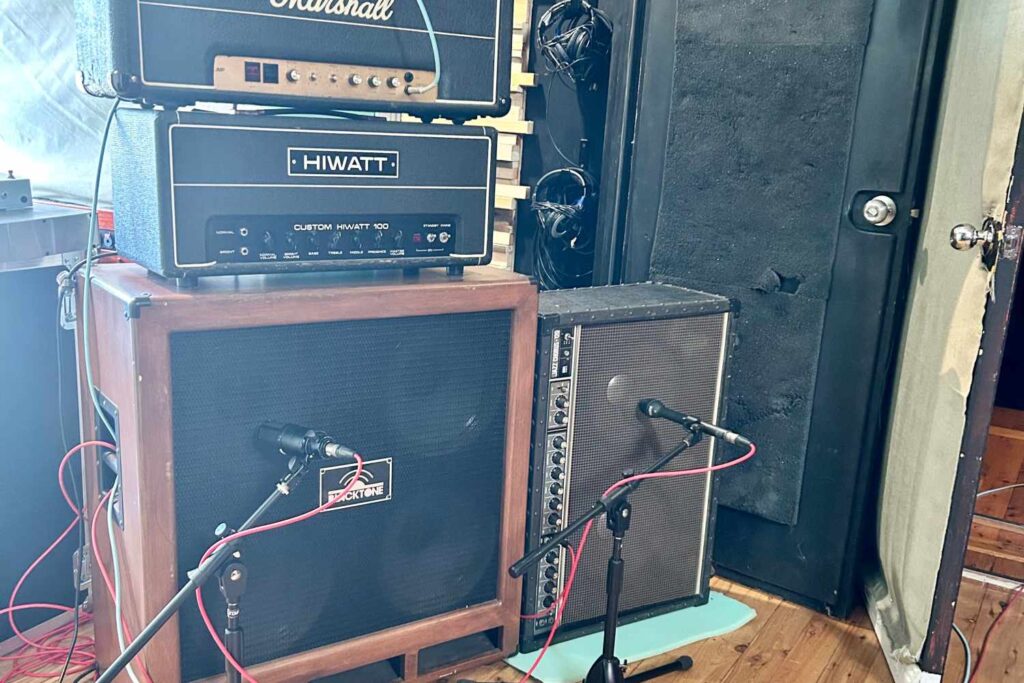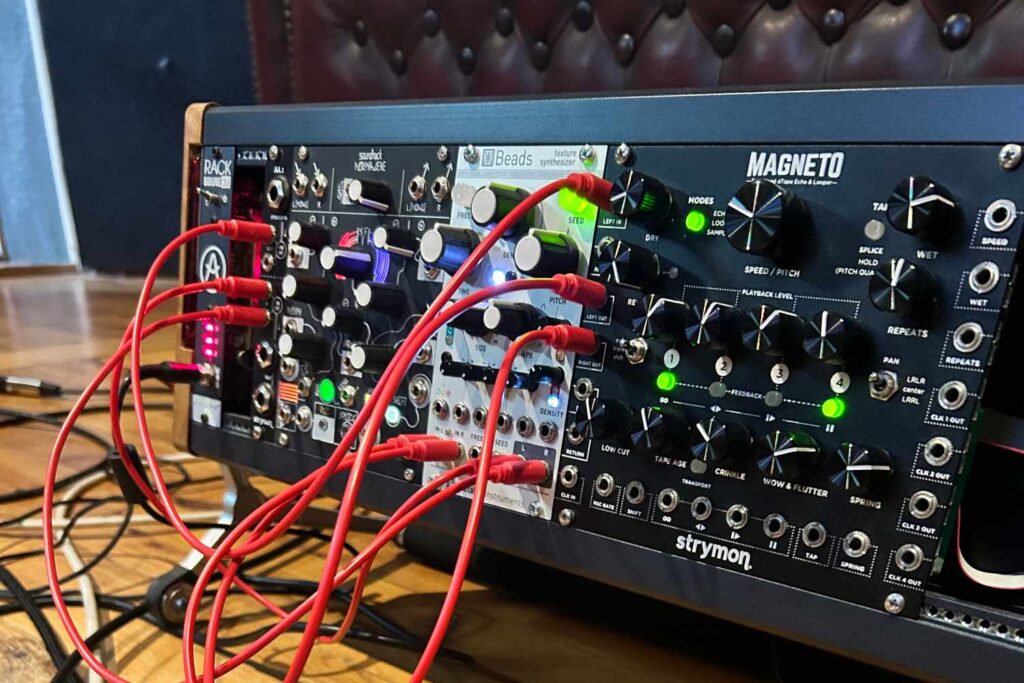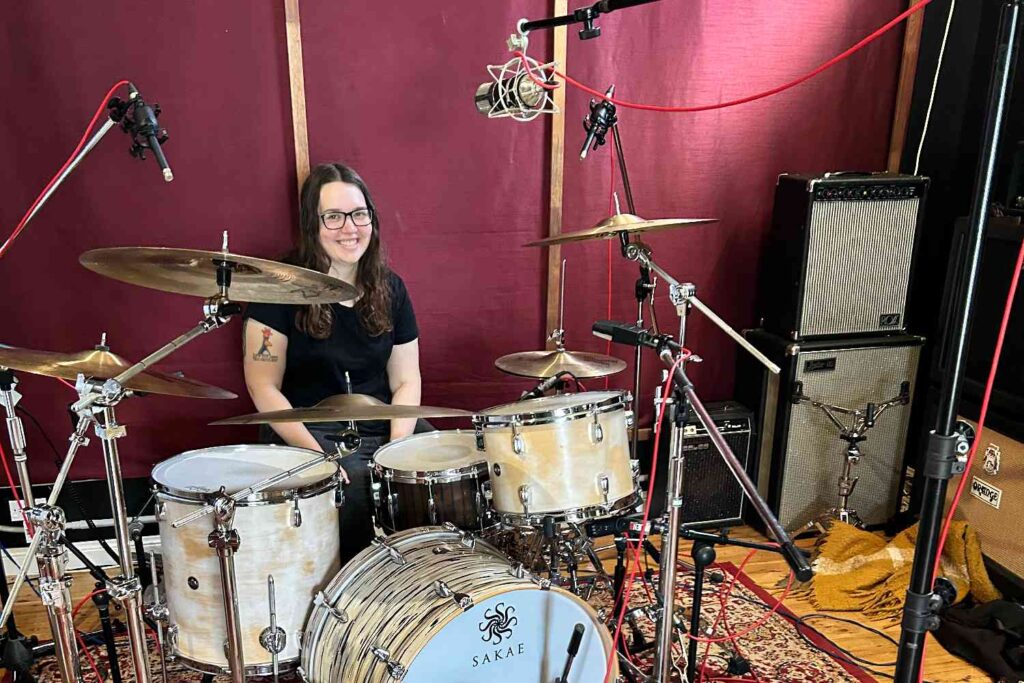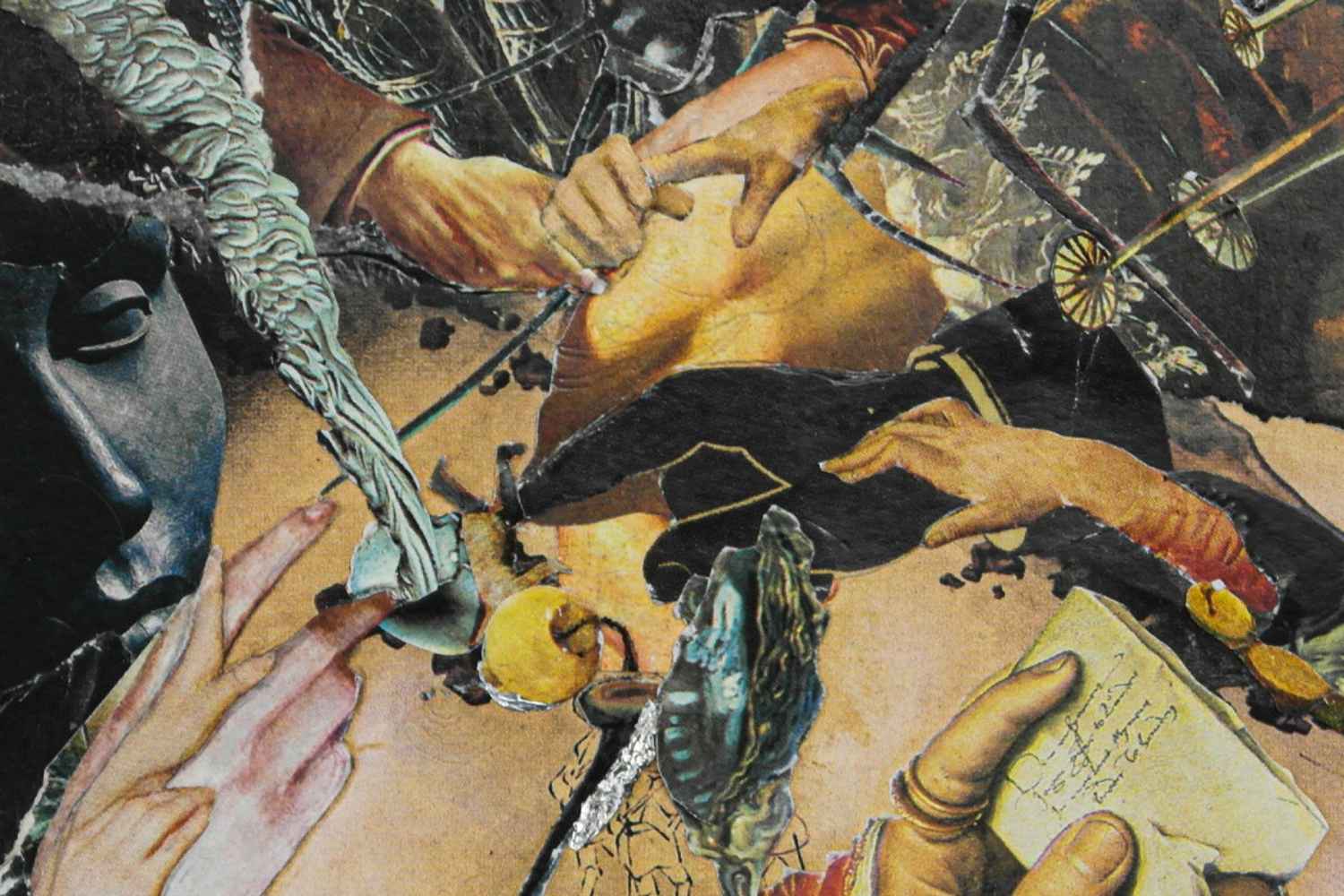Local Authority hail from Meanjin and seamlessly blend shoegazey, ambient tones into something entirely unique.
Local Authority
Last year I had the joy of spending a solid month sawing away at the oak tree that is the forthcoming sophomore record. This is a fantastic band, one that you should be aware of outside of the dry parameters of the “Australian Shoegaze” umbrella. There are of course some crowd favorite influences but Local Authority draw viands from broad and far reaching hands. Hands that belong to practitioners like Michael Rother (Neu!), Barry Burns, John McGeoch, Miki Berenyi (Lush) and Kim Deal. There were some closer to home references that we found common ground with such as Glide and Love of Diagrams, but speaking generally we searched for unconventionally gripping sonics that we could use to bolster the songs.

Read more features, columns and interviews here.
MODULAR MAYHEM
Modular is a particular money pit I haven’t fallen into yet but records like this are threatening to push me in. Jacque’s little system didn’t come into play much with guitar but it really shined on vocals and mix sends, essentially being splashed over the whole LP. The spring, break-up and tape simulation on the Strymon Magneto was invaluable as was the Mutable Instruments Beads unit which was primarily utilised for pitch/modulation effects.

TUBS AND BELLS
What separated this from every other long form tracking session at my home facility was that we cut each drum track with shells and cymbals separated. This may have happened here many years ago but I have no memory of it being a positive experience so I was slightly hesitant to dive in (albeit it was my idea). The purpose of this nonsense is to allow flexibility in the mix process to bring the cymbal balance up and down without affecting the balance of the bass drum, snare and toms. I foresaw it being primarily useful when it came to room microphones and the articulation of dynamics on cymbals such as ride and hats.
This recording technique is not uncommon but people may be most familiar with it due to Eric Valentine’s work on the Queens of the Stone Age record Songs for the Deaf. A prime example would be their most famous song “No One Knows” in which the drums have a distinctly dry and dead sound despite being paradoxically resonant and round. Coincidentally that record was also tracked on the same machine as ours (a 24 track ampex MM1200) in similar preparation (RTM, then known as RMGi 900 at 15 ips 500nWp/m). This wasn’t really the vibe we were going for, but other records had evidenced that as long as the parts weren’t too complex and the fills were not improvised then it would be a transparent process that would prove useful. It turned out that Talia (Bond, who also plays in Ancient Channels) did end up improvising a bunch of parts but this was no factor. Other than being one of the greater drummers I’ve had the pleasure to track with, she also happens to have Bobby Fischer-like calculation and never missed a change, dynamic or fill. It was not only astounding to witness but what always helps is a drummer’s attitude and hers was so happy-go-lucky that I almost forgot we were doing something perverse and allegedly painstaking.

The real inside baseball of tracking like this is finding those pockets of air where microphones really want to be in relation to shells. Moving coil microphones don’t like being too close to fast transient percussive instruments, but unfortunately it’s the corner we are painted into as engineers as we need to avoid cymbal spill. Being able to back the microphones off and collect that rich, resonant texture was a perquisite.
The agenda was to play through each song with every member in the room on headphones. As is routine I set up the band so it felt like a rehearsal and never really communicated when we were tracking. This is also the luxury of having a month to make a record. Once we had a version of a song that felt right I would map out a tempo, sometimes negating a tempo if it needed to ebb and flow. It would then be time for everyone to go back in the room to track it properly and at this point is where things started to look mildly silly. I threw blankets and pillows over all the cymbals and taped them so they essentially would emit an equal sound to hitting a pillow with a fist. When we proceeded with a take it was shells only and only after we were happy enough did we track cymbals over the top with spot mics, various overheads and room microphones (the same room sources being used for the shells).
The result is at times bombastic and cavernous and other times quite controlled and flat. This gave us a different option for every song on the record, I wanted to make sure an ensemble drum set sound was still evident. For example on the below linked single “Hang The World”, the drum sound is quite “normal”. This is something to always keep in mind when introducing new systems, techniques or gear. If something sounds fantastic, is it actually sympathetic to the song or production? I always remind myself not to lean on something too hard just because it sounds cool or turned out to be successful, in the end it’s not about how fancy the sonic palette is. It’s a boiler plate sentiment but all that matters is how a song makes you feel and if that requires negating a whole bunch of bells and whistles in servitude of the backbone of the band’s sound then that is what is required.
With a band like Local Authority this proves difficult as the songs are so absurdly good that whatever you throw at the record acclimatises to the band. Not the worst problem in the world.
Local Authority’s new record will be out soon on Kitty Records, till then you can hear the first single “Hang the World” here.







